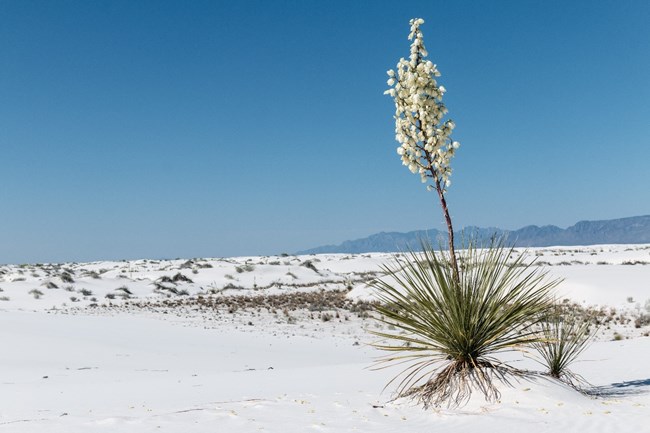Learn about NRCAs
The Natural Resource Condition Assessment (NRCA) Program provides framework, funding, and publishing support to parks to aid in the synthesis and documentation of natural resource conditions. Condition assessment reports are a tool to describe selected park resources, and record a snapshot of their current condition, identify trends, and identify potential or current threats and stressors. Understanding the condition and trend of natural resources is key for parks and NPS planners to appropriately prioritize and allocate stewardship resources.

NPS photo.
White Sands National Park, formerly White Sands National Monument, is located in south-central New Mexico within the Chihuahuan Desert. The Park supports drought-tolerant flora and nearly 130 species of resident birds, mammals, reptiles, and even amphibians.
Traditional NRCA Report: 2017
In an effort to better understand the natural resources and processes present at White Sand’s National Park, a Natural Resource Condition Assessment was conducted and published in 2017. This assessment was a collaborative effort between the National Park Service and St. Mary’s University of Minnesota. This team chose thirteen resources to be evaluated:
- Dune communities |
- Terrestrial and aquatic invertebrates |
|||||
- Semidesert grasslands |
- Soil faunal community |
|||||
- Migratory birds |
- Soundscape and acoustic environment |
|||||
- Breeding birds |
- Viewscape |
|||||
- Reptiles |
- Surface water hydrology |
|||||
- Desert faunal community |
- Groundwater hydrology |
|||||
|
|
- Cenozoic trackways |
White Sands National Park represents one of the most ecologically diverse and scientifically important areas in the Chihuahuan Desert, and the resources found within its boundaries are interrelated and share many management concerns. One component is considered to be in good condition (breeding birds), one component is considered of moderate concern (viewscape), and three components are considered of high concern (surface water hydrology, ground water hydrology, Cenozoic trackways). The remainder of the resources were not assigned a condition score in this assessment due to lack of data. Several park-wide threats and stressors are present in the park, and the threat of climate change looms; however, until additional and expanded research efforts are initiated, a complete understanding of the health of the priority resources in the park cannot be determined. Management efforts to increase monitoring in the park will allow for park managers to obtain a better understanding of the many unique resources in the park.
For other reports and natural resource datasets visit the NPS Data Store.
Source: NPS DataStore Collection 7765 (results presented are a subset). To search for additional information, visit the NPS DataStore.
Last updated: August 16, 2022
